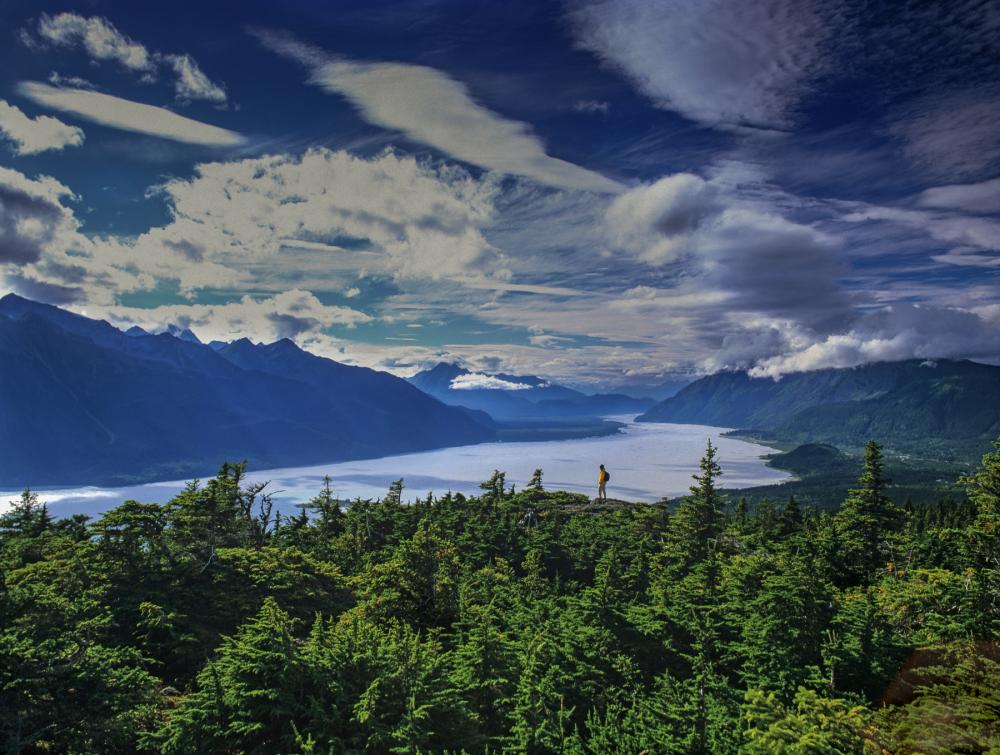Legislation safeguards America’s roadless public lands

Landscapes like Tongass National Forest can demonstrate locally-driven conservation
Howie Garber
Serious threats to public lands in Alaska and Utah prove this legislation has never been more critical.
Sen. Maria Cantwell (D-Wash.) and Rep. Ruben Gallego (D-Ariz.) introduced companion bills to protect nearly 60 million acres of wild national forests by making the 2001 Roadless Area Conservation Rule a permanent law. The legislation counters actions by the Trump administration and their allies in Congress to dismantle the popular rule and open up pristine lands to development.
Statement from Melyssa Watson, Executive Director, The Wilderness Society:
“Our country’s forested public lands provide people with clean drinking water, a place to recreate and are home to abundant wildlife. The nation’s Roadless Rule is what protects these lands, and with them these values that the public holds near and dear. The threats to the Roadless Rule are real. In Alaska and Utah, wild, forested public lands are in jeopardy. Sen. Maria Cantwell (D-Wash.) and Rep. Ruben Gallego (D-Ariz.) understand that we need to not erode protections that are working, we need to strengthen them. We thank Sen. Cantwell and Rep. Gallego for introducing the Roadless Rule Conservation Act and for their leadership in helping preserve and protect our wild public lands.”
The Wilderness Society urges Congress to support the Roadless Area Conservation Act of 2019 to permanently protect these public lands from road-building, logging and industrial development.
Background
The National Forest Roadless Area Conservation Rule known as the “Roadless Rule,” was adopted in 2001 by the U.S. Department of Agriculture, which oversees the U.S. Forest Service. The policy was designed to preserve the country’s most wild, forested public lands in the national forest system. The Roadless Rule protects about 58.5 million acres across 39 states. Here are a few roadless area facts:
- Roadless areas contain all or portions of 354 watersheds that serve as drinking water sources by 60 million people nationwide.
- Some 150 million people visit our national forests and grasslands for outdoor recreation each year. These visitors sustain over 220,000 full and part time jobs, and contribute over $15 billion to our nation’s economy. Roadless areas serve as a backdrop to such iconic places as the Appalachian, Continental Divide, and Pacific Crest trails.
- The Forest Service oversees an expansive 370,000-mile road system with a backlog of uncompleted, unfunded road maintenance work that tallies $3.2 billion dollars. Given this, it makes no sense to open millions of acres of pristine forest to costly road-building that the American taxpayer would shoulder.
- Roadless portions of national forests serve as critical habitat for hundreds of threatened and endangered species, from grizzly bears and Canada lynx to Pacific salmon and Bull trout. Without such havens, many of these species could be pushed towards extinction.
Contacts:
- Chelsi Moy, Northern Rockies Communications Manager, The Wilderness Society, (406) 240-3013, cmoy@tws.org.
- Josh Hicks, Roadless Defense Campaign Manager, The Wilderness Society, (303) 650-1148, josh_hicks@tws.org.
The Wilderness Society, founded in 1935, is the leading conservation organization working to protect wilderness and inspire Americans to care for our wild places. With more than one million members and supporters, The Wilderness Society has led the effort to permanently protect 109 million acres of wilderness and to ensure sound management of our shared national lands. www.wilderness.org
